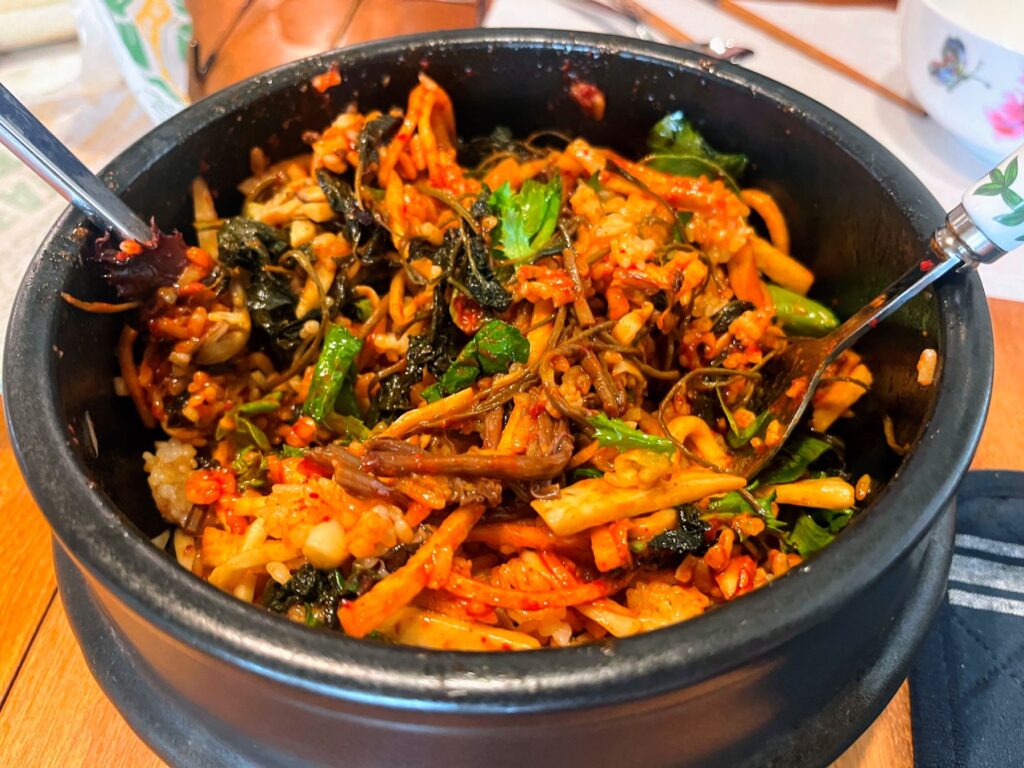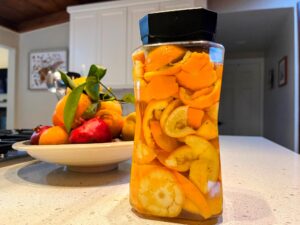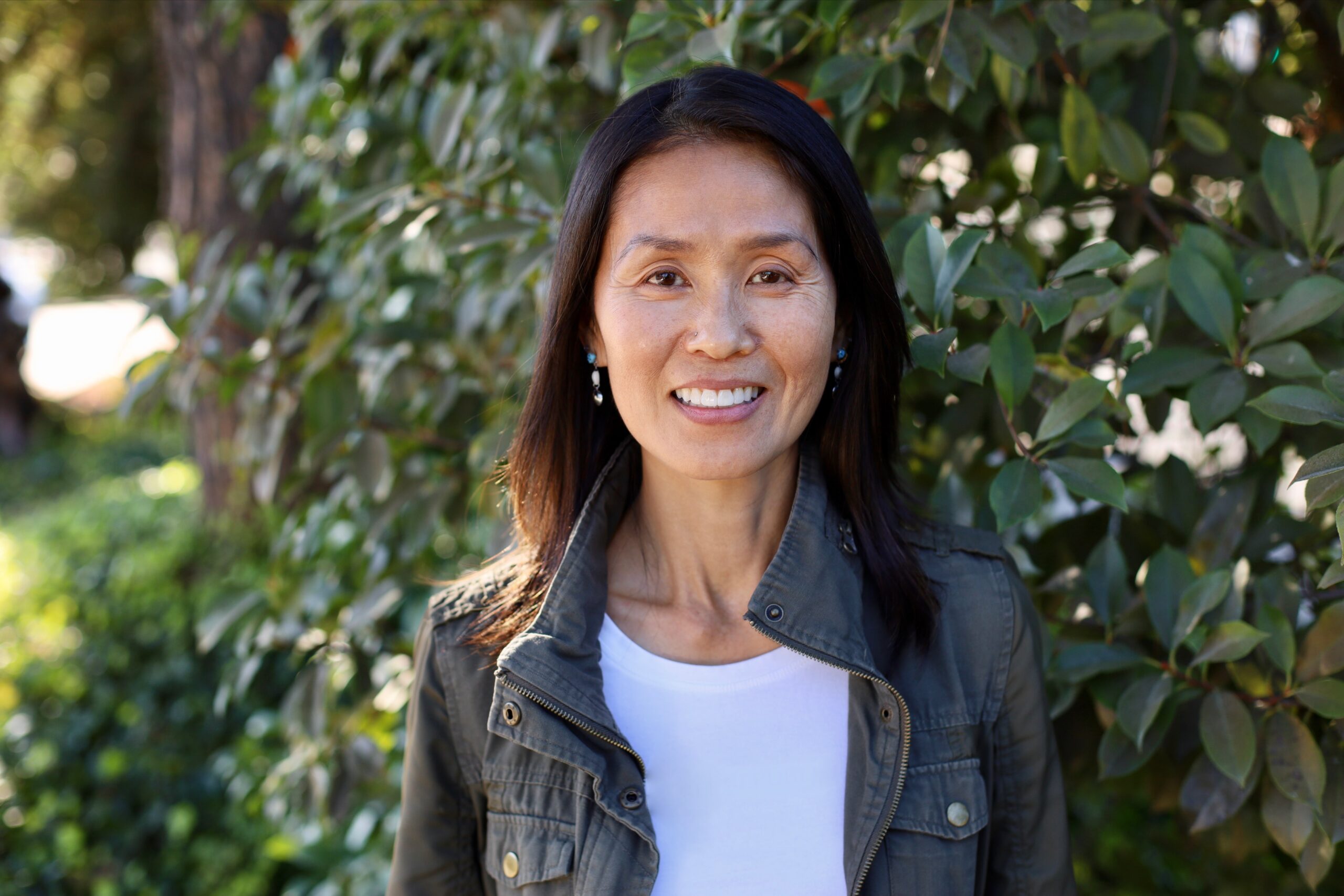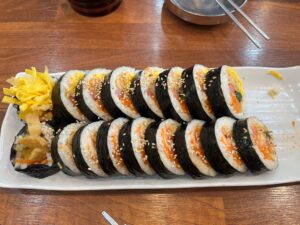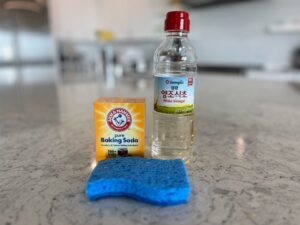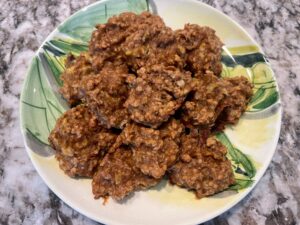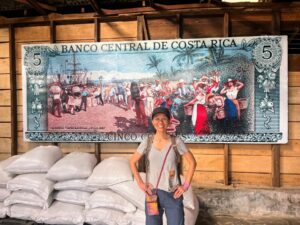This Korean Dolsot Bibimbap recipe is a flavorful rice bowl served in a hot stone pot, filled with crispy rice, colorful veggies, and spicy gochujang sauce. Not only is it beautiful to look at, but it’s also one of the most popular dishes in Korean cuisine—and for good reason. With its mix of textures and bold flavors, every bite is exciting and satisfying. In this post, I’ll walk you through how to make it at home, step by step, so you can enjoy this classic Korean dish anytime you like.
The History of Dolsot Bibimbap
Dolsot Bibimbap is a traditional Korean dish with a long history. “Bibimbap” means “mixed rice” in Korean, and it’s believed to have started as a way to use leftover rice and vegetables. The dish became popular in Korea because it’s both delicious and healthy, offering a mix of rice, vegetables, and sometimes meat, all topped with a spicy sauce.
The word “dolsot” means “hot stone bowl” in Korean. This bowl gives the dish its special touch—it keeps the food warm and creates a crispy rice layer at the bottom. As time passed, Dolsot Bibimbap grew in popularity, not just in Korea but around the world. People love it for its healthy ingredients, bold flavors, and satisfying texture.
A Warm and Customizable Meal
This Dolsot Bibimbap is warm and comforting, especially great for cold winter days. Unlike regular Bibimbap, which is light and perfect for warm weather, Dolsot Bibimbap gives you that cozy feeling. My favorite part is the crispy rice at the bottom of the bowl. As it heats up in the stone bowl, it gets nice and crunchy, adding extra texture to the dish.
For the spicy red pepper paste sauce, I like to make a batch ahead of time so it’s ready when I need it. It’s quick to prepare and adds the perfect amount of heat and flavor. Once you’ve put the rice and veggies in the bowl, just drizzle the sauce on top and finish it with a little sesame oil for extra flavor.
What makes this Korean Dolsot Bibimbap recipe so great is that you can add anything you like—more veggies, a protein like tofu or tempeh, or even a fried egg. It’s easy to customize, making it a great choice for busy days when you want a quick, healthy meal. This dish is a tasty and filling twist on the traditional Korean rice salad, perfect for any time you need a satisfying, well-balanced meal!
Healthy Dolsot Bibimbap Recipe

Makes 2 servings
Ingredients:
- 1 cup cooked rice (white or brown)
- 3 – 4 cups mixed vegetables (like spinach, carrots, zucchini, mushrooms)
- 1/2 onion, sliced
- 1/2 zucchini, sliced
- 1/2 cup mushrooms, sliced
- 2 tsp sesame oil
- 1 tsp sesame seeds (optional)
- Fried egg (optional)
For the Spicy Red Pepper Paste Sauce:
- 2 tbsp gochujang (Korean red bean paste)
- 1/2 tbsp soy sauce
- 1 tsp sesame oil
- 1 tsp honey or sugar (optional)
- 1/2 tsp rice vinegar
- 1 tsp garlic, minced
Instructions:
Prepare the Rice: Cook your rice and set it aside. If you have a stone bowl (dolsot), place it on low heat to warm up while you prepare the rest of the ingredients for your Korean Bibimbap.
Make the sauce: In a small bowl, combine the gochujang, soy sauce, sesame oil, honey (or sugar), rice vinegar, and minced garlic. Then, stir until everything is well blended. Set aside.
Cook the Vegetables: Lightly sauté the vegetables in a little oil until they are tender. You can choose any vegetables you like, but spinach, carrots, and zucchini are common in Bibimbap.
Assemble the Bibimbap: If you’re using a hot stone bowl, place the cooked rice at the bottom. Drizzle a little sesame oil over the rice to help it crisp up. Then, arrange the cooked vegetables and fried egg on top of the rice.
Serve and Mix: Add a spoonful of the spicy sauce on top of the vegetables and egg. When you’re ready to eat, mix everything together in the bowl. The crispy rice at the bottom is one of the best parts! If you want to add an egg, fry it sunny-side-up in a little oil. This step is optional, but it adds a nice richness to the dish.
Serve and enjoy: Mix everything together and enjoy your Korean dolsot bibimbap!
Easy Tips for Making Dolsot Bibimbap
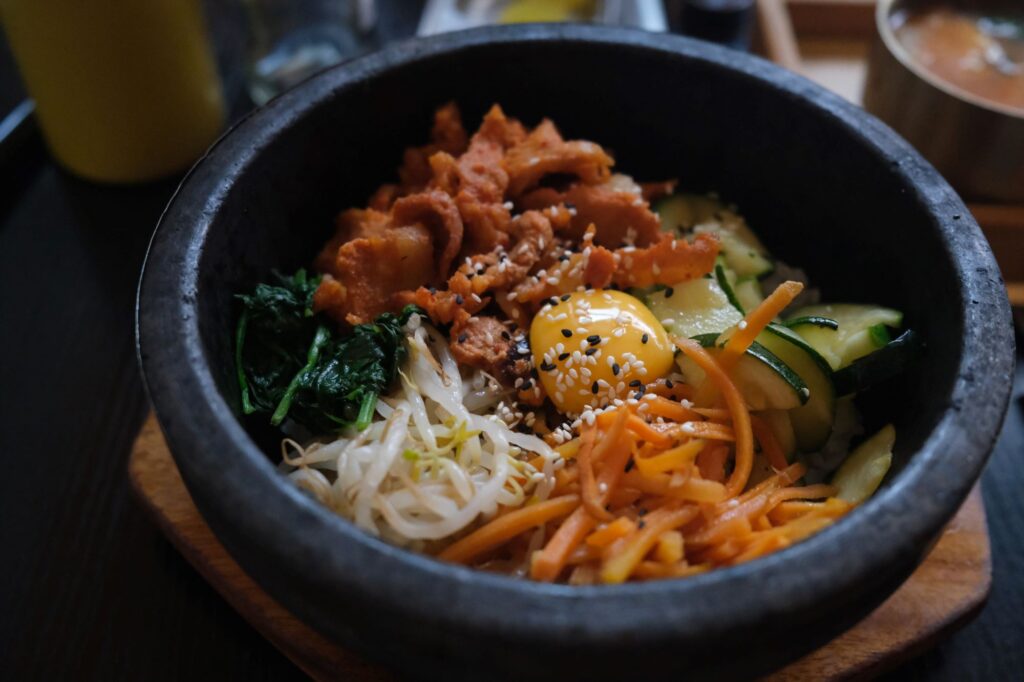
This Korean Dolsot Bibimbap dish pairs perfectly with a light soup, like my seaweed soup. If you like, you can also add some toasted seaweed by crushing it and sprinkling it on top right before mixing.
To make it even easier, you can prepare everything ahead of time. You can cook the stir-fried vegetables in advance or use leftovers for your next meal. Keep any leftovers in the fridge and just microwave it for a few minutes before adding it to your healthy Dolsot Bibimbap.

